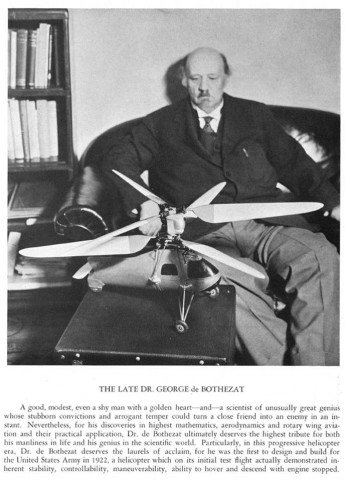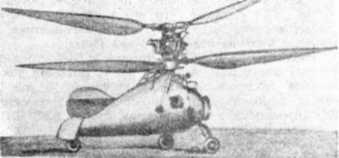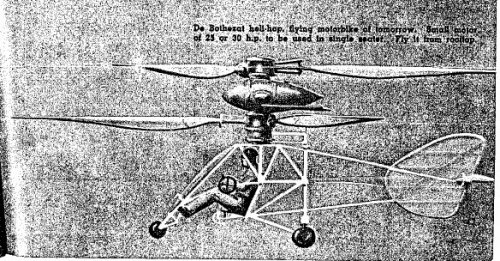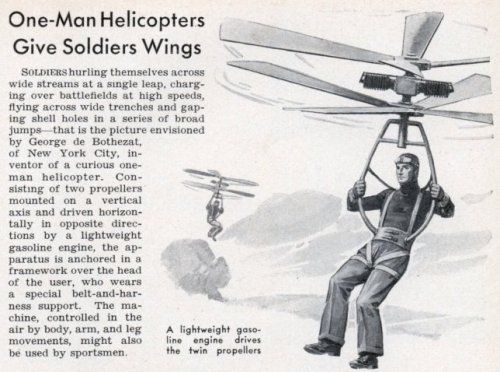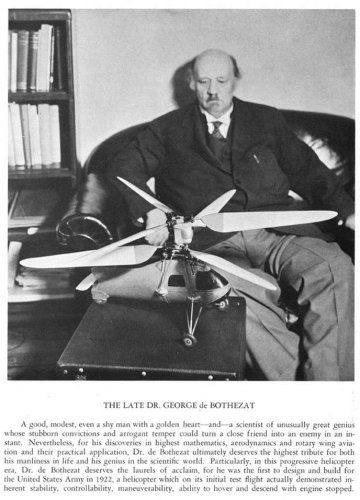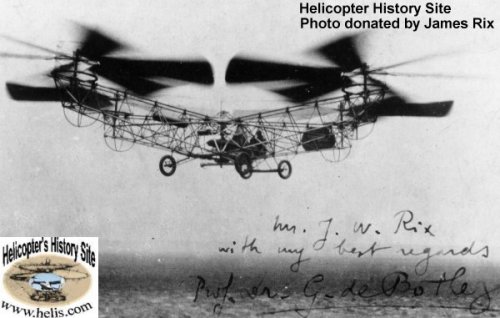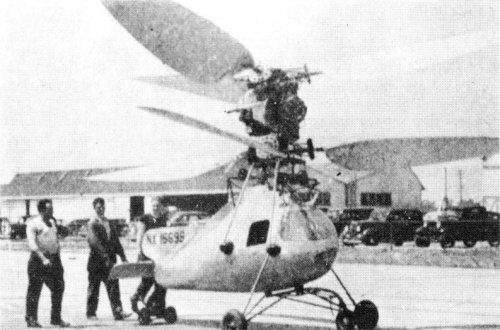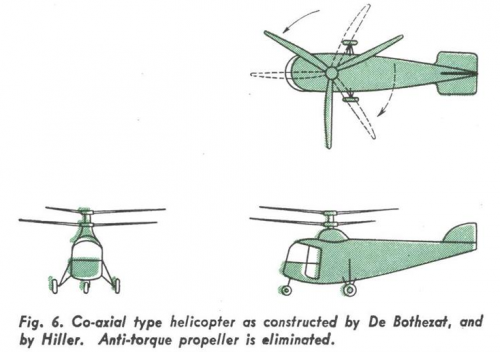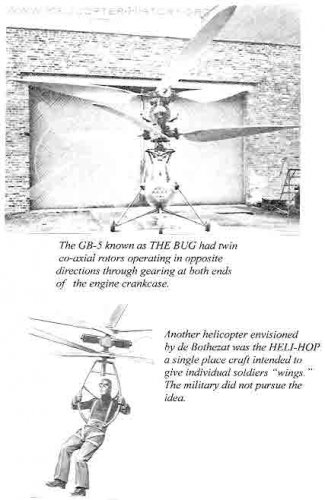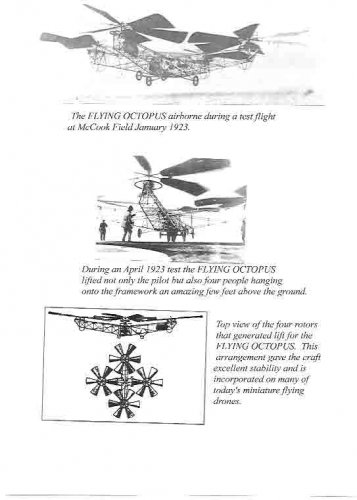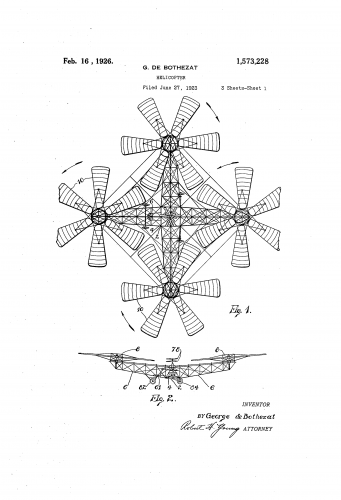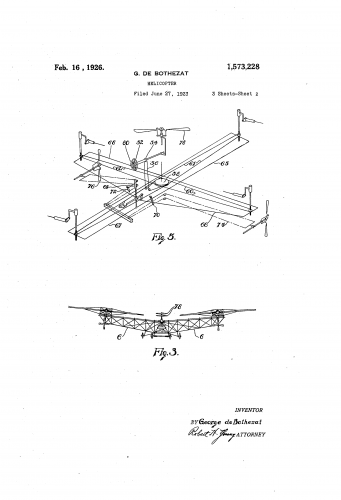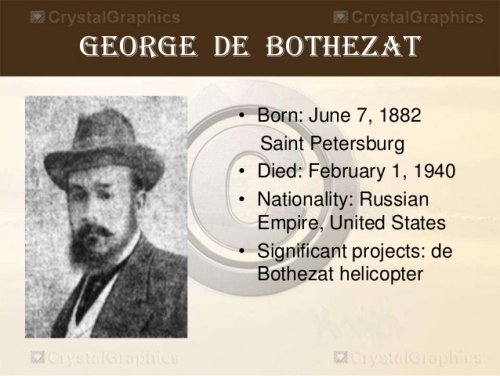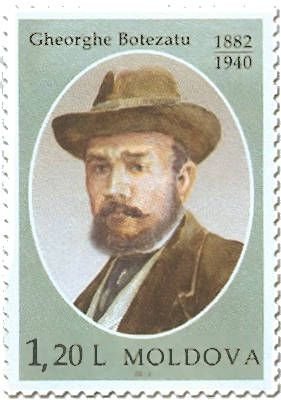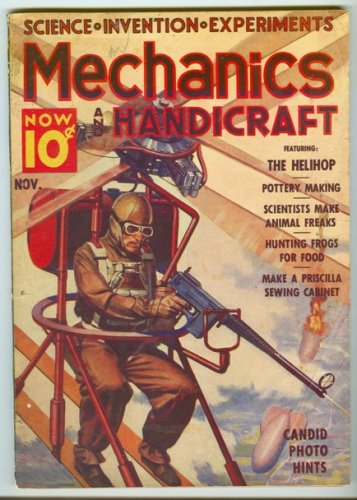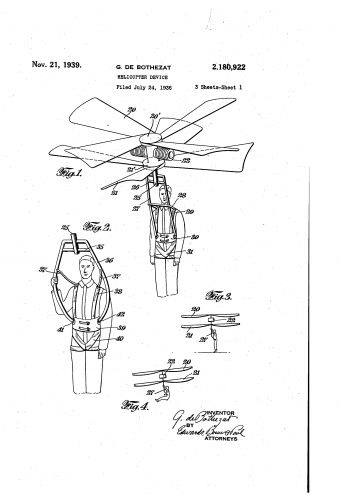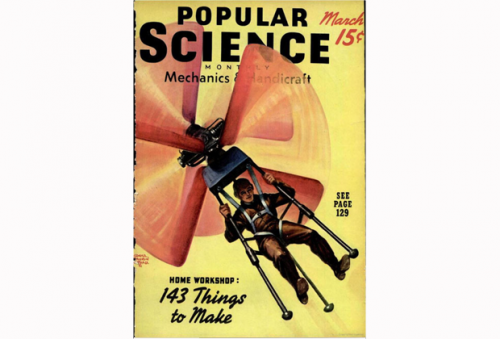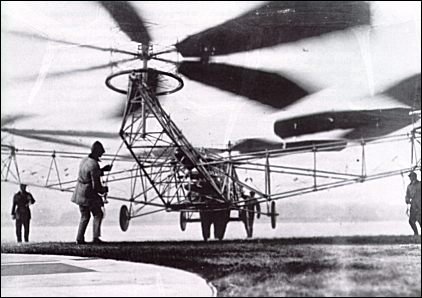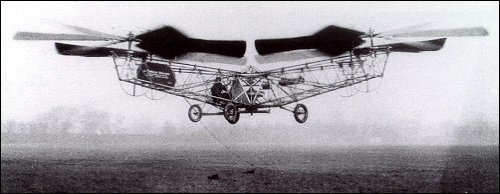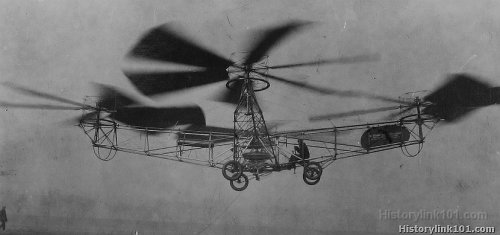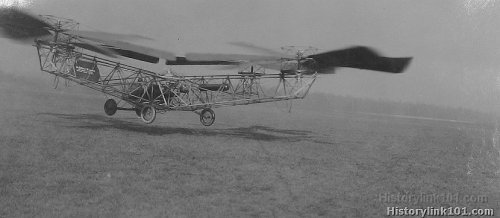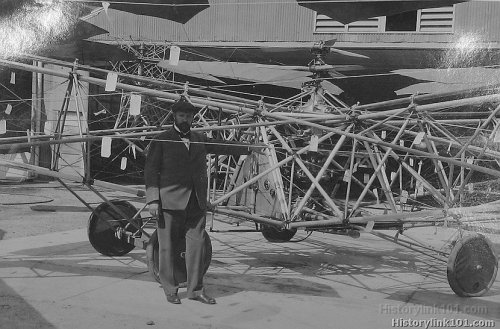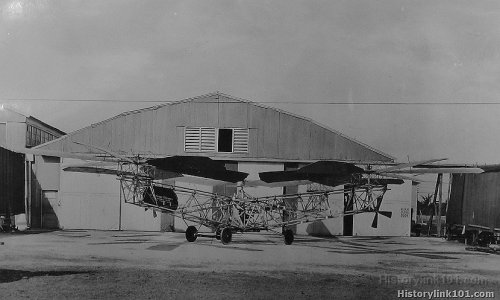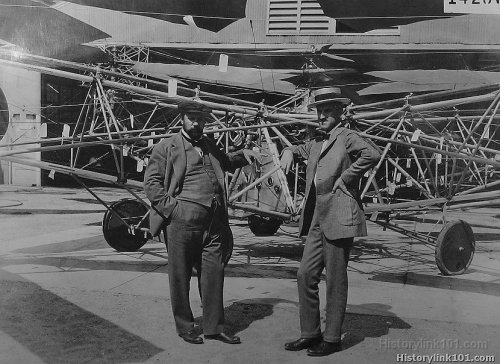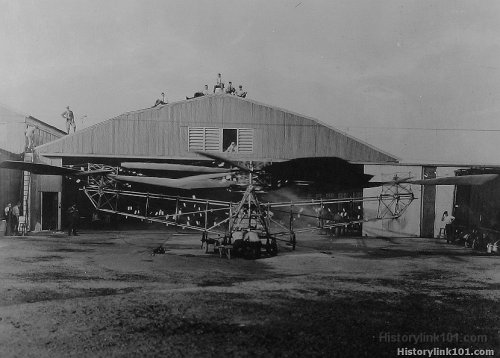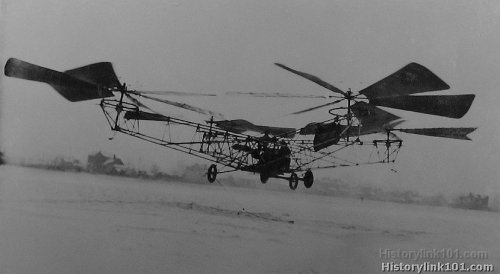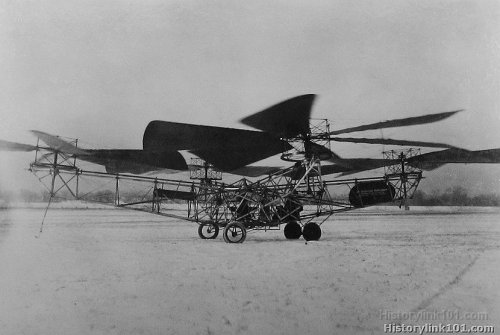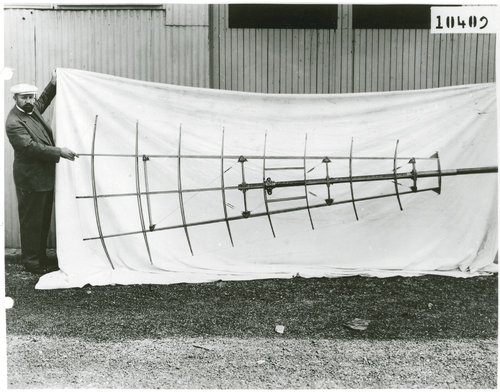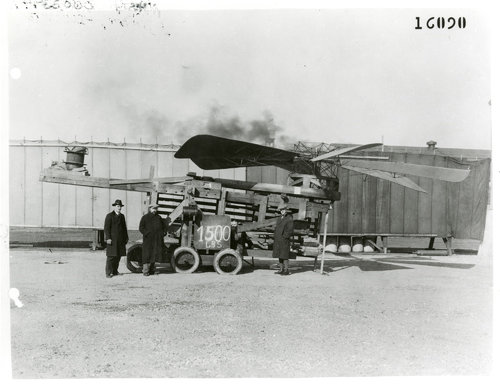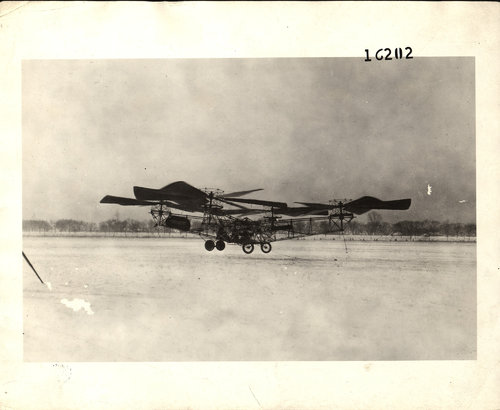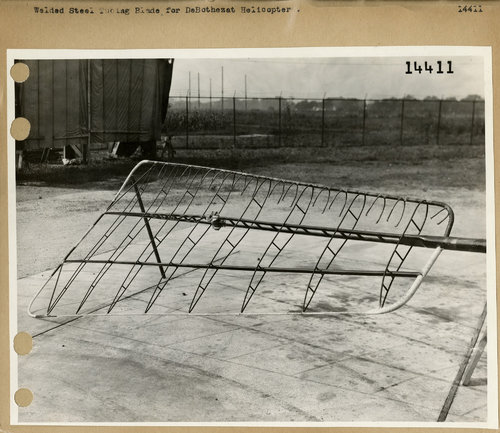de Bothezat had designed a co-axial helicopter known as the GB-3-4 during the 1930s. It was a new concept. It incorporated twin co-axial rotors with the engine placed between the rotors driving them in opposite directions through gearing at both ends of the crankshaft. Corporation headquarters were located at 31-45 Davis Street on Long Island, and as was the case with most companies during these depression days was always short of funds to carry out operations.
Powered with an 85hp Franklin (possibility a 4AC-199-D2, four cylinder, air-cooled, horizontally opposed engine) “The Bug” as the GB-5 was known as, was first test flown by Sergievsky on 9 May 1940. Unfortunately Dr. de Bothezat had passed away at a Boston hospital on 1 February 1940 of “an old and untreated illness” at age 58. The GB-5 was tested in various configurations, but de Bothezat’s successor, Watson M. Washburn was unequal to the task as set forth by de Bothezat. The tests were moved to Roosevelt Field where they continued into the summer of 1940. The aircraft was unable to climb higher that 5 ft. A crash put an end to the GB-5, and very little is known about its eventual disposal.
The rotor diameter was approximately 28ft. And the total weight was 606.375 lbs. An article on the internet doubts that the helicopter could have auto-rotated. Certainly this seems quite likely.
Before de Bothezat passed away he came up with the concept of the “Heli-Hop” a one man helicopter intended for use by the military. Two designations are used in Sergievsky’s 1943 article, the GV-2 and GV-5. Romanian Aeronautical Constructions does show two different versions, however, the unexplained GB-3-4 test rig is another possibility. The Wikipedia article seems to imply that the GB-3-4 was the SV-2, and the
GB-5 “The Bug” was the SV-5. In 1948 the de Bothezat Impeller Company, Inc., was involved in a lawsuit.

